Eric Branco on seeing the world in black and white for 'The 40-Year-Old Version'
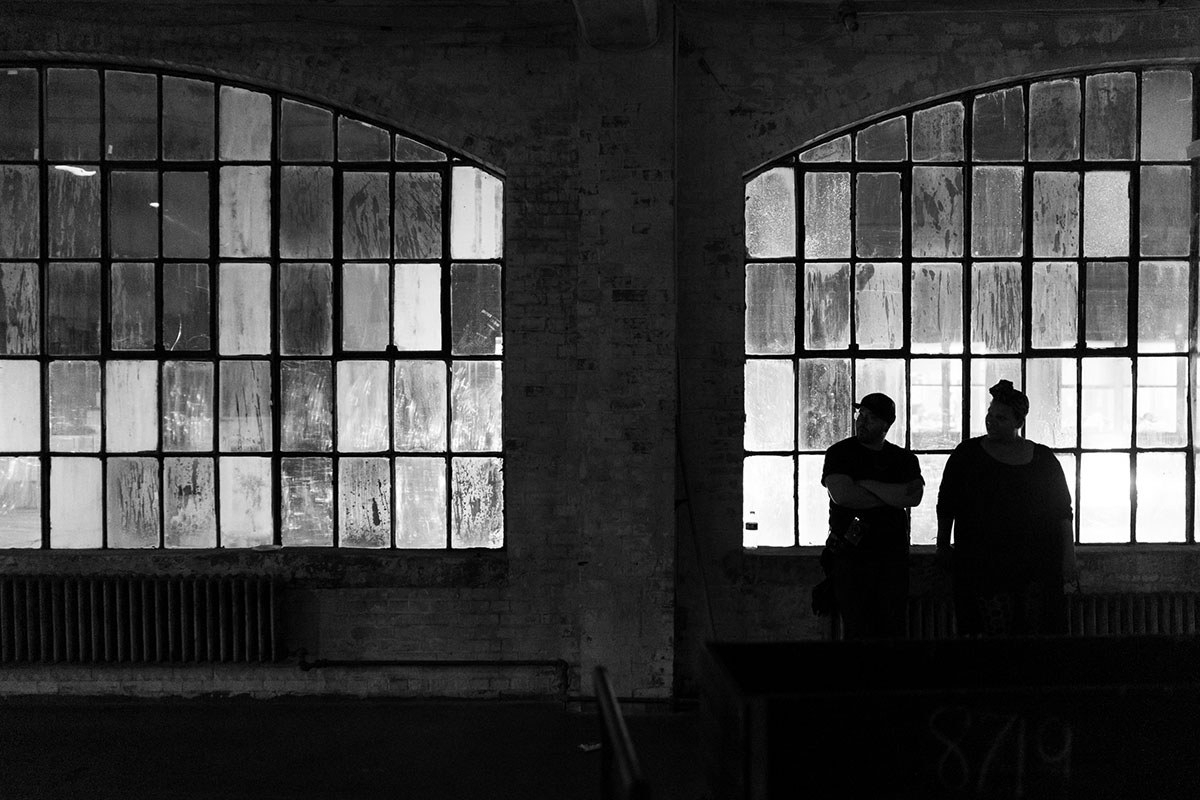
When lighting scenes for Radha Blank, Eric Branco made use of windows to avoid lighting stands onset. Photo courtesy of Inuka Bacote and Eric Branco.
Back in August 2019, Variety reported that Lena Waithe (Queen & Slim) was producing a comedy written, directed and starring Radha Blank (She’s Gotta Have It) as a struggling New York playwright who decides to reinvent herself as a rapper at the age of 40. Principal photography for The 40-Year Old Version took place in New York City for 20 days and was captured in 35mm black and white film by cinematographer Eric Branco (Clemency). “It was different in a lot of ways but also felt familiar and comfortable,” notes Branco. “Radha and I are from New York City and share a similar sensibility. The 40-Year-Old Version felt like the movies I used to make running around the city and shooting things off the cuff, however, on a larger scale.” Key crew members were gaffer Tyler Harmon-Townsend, key grip Scott DeAngelo, camera operator Brent Weichsel, first AC Tsyen Shen, second AC Jonathan Jeng, and loader Anjela Coviaux.
Blank directing and acting did not complicate the shooting process. “Radha had such a singular vision for the film that it made sense that she took on all of these roles,” states Branco. “It’s a different kind of directing where you are directing from within the scene rather than from the monitor or video village. It’s much more immersive.” Most of the conversations about the cinematography took place during preproduction. “We tried to identify our mutual filmic language so by the time we’re on set all of that was in the past and we had our game plan.” New York City street photography influenced the visual style. “I happened to come to New York when Radha first reached out. I actually showed up to the interview with a bag full of street photography books. It was going to be black and white from the start. That was her vision. I had books from Bruce Davidson, Matt Weber, Saul Leiter, Gordon Parks, Henri Cartier-Bresson, and Weegee.”
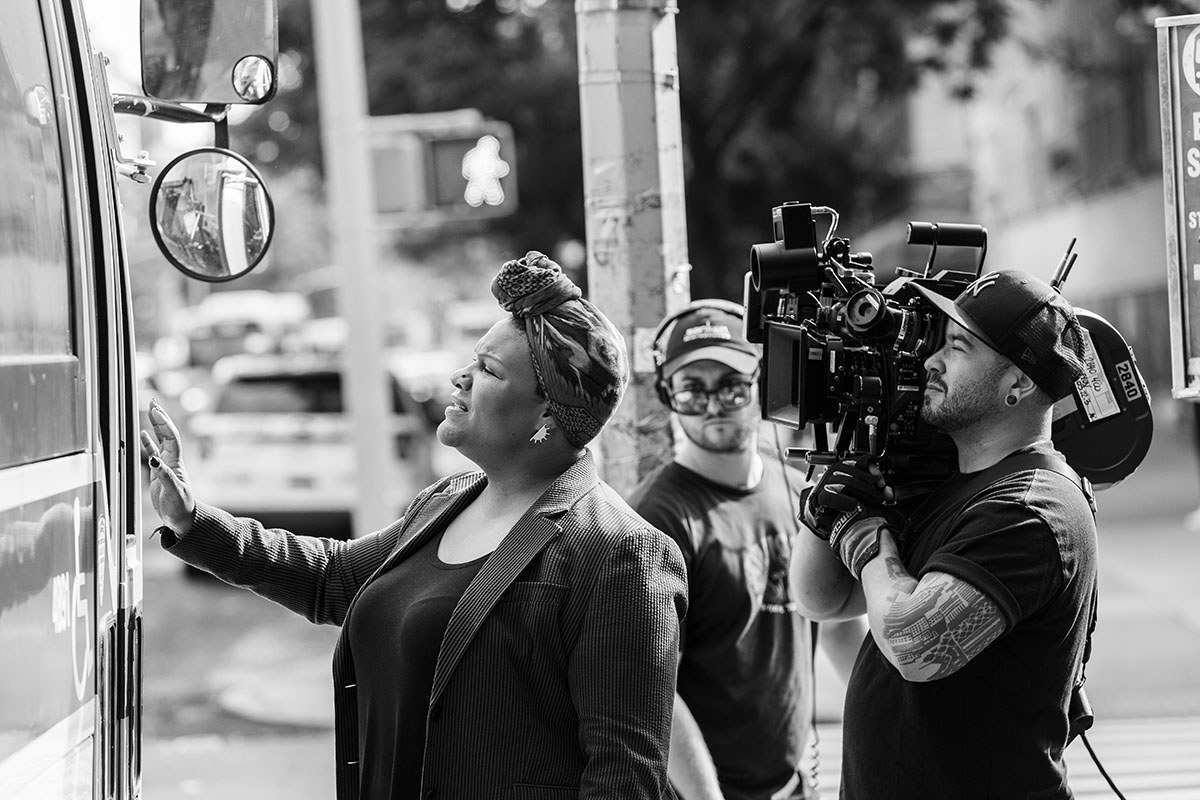
Eric Branco was inspired by the street photography of Bruce Davidson, Matt Weber, Saul Leiter, Gordon Parks, Henri Cartier-Bresson, and Weegee. Photo courtesy of Inuka Bacote and Eric Branco.
From the beginning Blank wanted the footage to be shot on black and white 35mm film. “Radha’s main reasoning was that Black cinema these days is in its infancy,” explains Branco. “Obviously, there are touchstones of Black cinema, but we’re reaching a new level of quantity and quality. Radha felt that a lot of other groups had their black and white, French New Wave, Noire or whatever it may be. However, most of the touchstones [of Black cinema] are in color so we don’t get to see ourselves presented in the glamourous filmic silver beauty of black and white.” KODAK EASTMAN DOUBLE-X Black and White Negative Film 5222 was the main film stock. “We did need to do a fair amount of convincing to let us actually shoot on 5222. A lot of black and white films are shot 5219 or some kind of color stock and then printed or scanned and graded to black and white.”
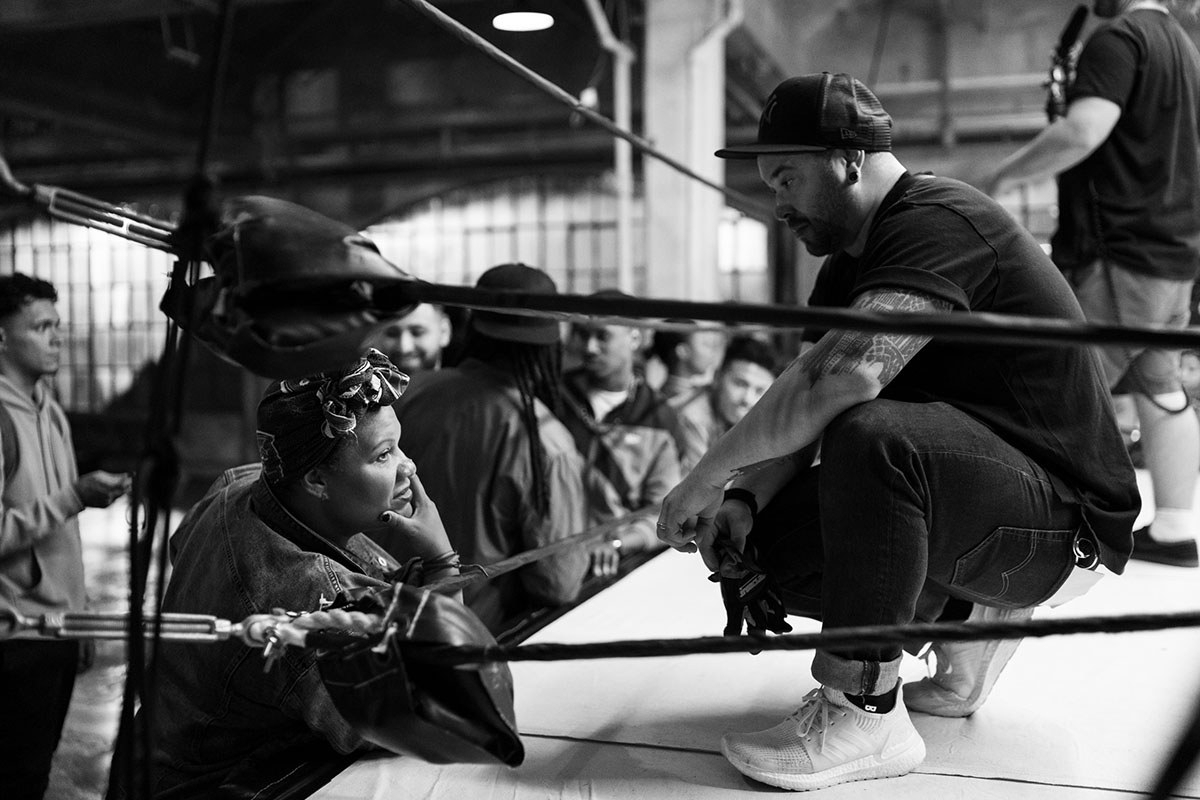
Sometimes Radha Blank and Eric Branco would be shooting a scene not knowing where the next day’s location was going to be. Photo courtesy of Inuka Bacote and Eric Branco.
Nighttime exteriors were captured with KODAK VISION3 500T Color Negative Film 5219. “We did shoot a small amount of 5219 mainly for night exteriors,” reveals Branco. “I wanted to capture the way that night in New York looks to the eye. 5222 is only 200 ASA so I would have had to light the street scenes at night in such a way that it would have lost some of its naturalistic realism. We did a bunch of testing and settled on shooting our night exteriors on 5219 pushed two stops to try to match the grain of the 5222 as well with a bleached bypass to try to retain some of that silver and help with our halation.” Camera equipment was supplied by Technological Cinevideo Services in New York City. “We were shooting on ARRI Arricam LT cameras and ARRI only makes an aluminum pressure plate for two and three perf. Since the 5222 didn’t have an antihalation back what would happen is any strong light source would come in, expose the film, bounce off the pressure plate, re-expose the backside of the film, and we would end up with these crazy vertical flares. We had to shoot four perf because ARRI only ever made an anodized black pressure plate in four perf. We shot dozens of rolls trying to land on a look. All of the 5222 is pushed one stop.”
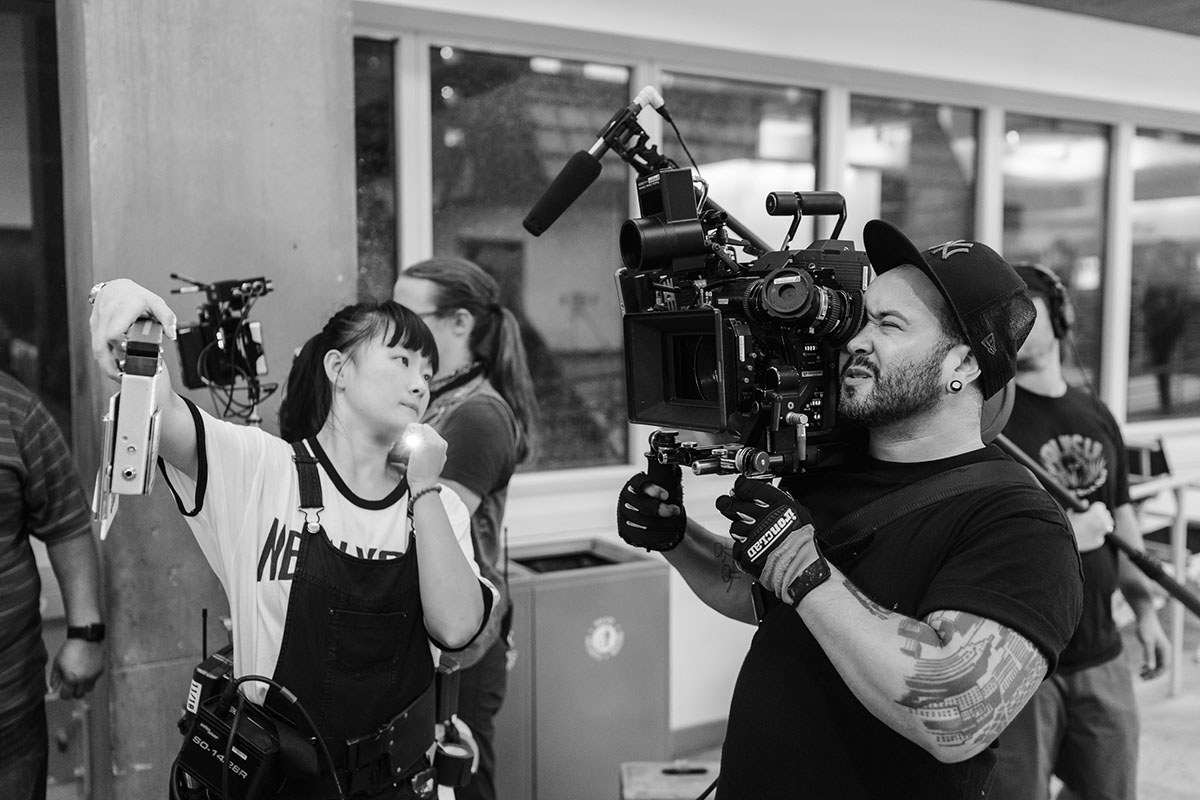
First AC Tsyen Shen with Eric Branco who made use of 400- and 1000-foot mags when capturing the necessary footage. Photo courtesy of Inuka Bacote and Eric Branco.
“I shot Zeiss Super Speeds in step with the idea of shooting the film black and white and trying to recapture that feeling of Hollywood glory days,” remarks Branco. “I also didn’t want to use a modern lens. As much as I love Master Primes, they were not the lens for this film. Super Speeds are older and grittier; they make me think of the beautiful naturalistic films of the 1970s. I stayed on the wider side of things. The 25mm was definitely a workhorse and we used the 50mm a fair amount as well for close-ups and portrait shots.” Tungsten lights are generally favored over LEDs. “I don’t think that LEDs have quite matched tungsten yet. But on this film that kind of color temperature didn’t matter as much. We were also quick and dirty trying to run around and grab as much as we could in a day. I embraced LED fixtures on this one. We used LiteMats and Astera tubes a ton. They’re definitely things that I wouldn’t use normally for the kinds of scenes that I used them for on this.”
Even with a month of prep, locations were being found while principal photography was taking place. “There were days where we’d be shooting and didn’t have the next day’s location,” reveals Branco. “We couldn’t let that stop us because of the schedule. Some of the things were shot listed in a vacuum and then it was a matter of translating what we wanted to accomplish with the shot list to the location itself. Shot listing is half about how you’re going to shoot the scene and half about the DP and director getting on the same page about what the emotional beats in the scene are and what is or isn’t important. Even without a location all of that stuff is still valuable.” One day was spent on a stage for an underground hip-hop concert sequence. “The weather was surprisingly nice in New York. We shot in August which has a threat of being overbearingly hot and humid. There were no rain delays.”
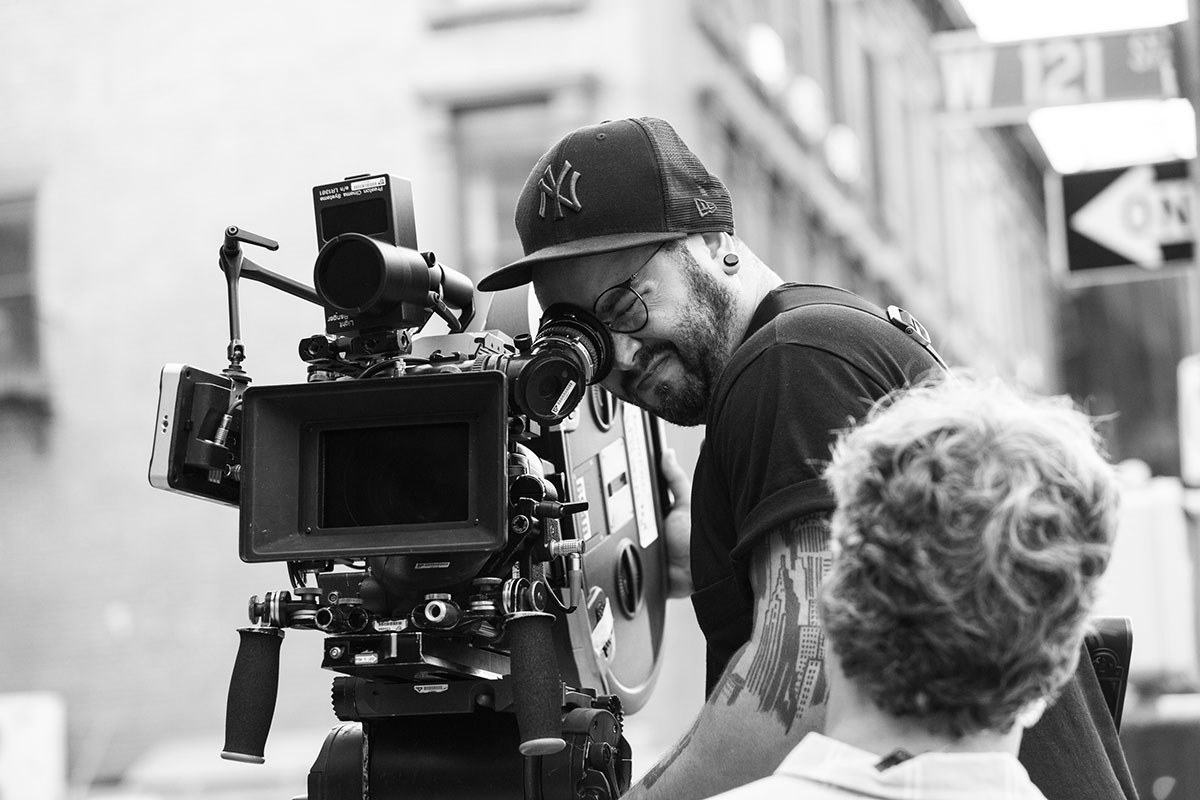
The 25mm lens was favorite for Eric Branco while close-ups and portraits tended to be shot with a 50mm. Photo courtesy of Inuka Bacote and Eric Branco.
A documentary shooting style was adopted for the project. “This was a single camera shoot and a lot of it was a long handheld oner to cover a scene,” explains Branco. “Even with scenes where we did coverage there would be a take or two where we would swing the camera back and forth between whoever was delivering the line, and then our editor Robert Wilson [Goldie] and Radha were able to pick and choose, whether this should play as an oner? Is a swing here going to heighten the immediacy? Or should it be a straight cut? That was our methodology.” Colorlab in Rockville, Maryland processed the dailies. “We settled on a scope ratio because we were trying to take the small story in which our characters are set and who aren’t often heard from on film, and make it feel like a glamorous version of this world.”
“Most of the film we shot on 400-foot mags,” states Branco. “There were a few longer scenes where we used 1000-foot mags such as when Radha and her love interest do some improvised singing.” A big play premiere takes place near the end of The 40-Year-Old Version. “We built a show on a stage and there were lighting cues so everything could run take after take. It was true to how we shot the rest of the movie.” In regards to lighting scenes, Branco tries to minimize the amount of equipment onset. “I’m often lighting from windows or have things rigged in the ceiling or mirrors for bouncing light around the room; that way I don’t have to stand right upon actors. A lot of this film was lit through windows. In the school scenes there was an extensive rig where we were shooting off of a bank of 1x1 mirrors above the windows. I definitely leaned heavily into the contrast. I used a lot of negative fill.”
Six days were spent in DI at Goldcrest in New York City with colourist Nat Jencks (Juliet, Naked). “Once the film was scanned it became a digital job which is a modern hybrid film workflow,” notes Branco. “What was amazing in the DI was how well we maintained our highlights and shadows because of shooting on film. We would pull down highlights in the windows and even rescanned a couple of scenes to bring down highlights and then composited those together in the DI. There were numerous fun things that we were able to do that couldn’t have been done had we shot digitally.” Visual effects were minimal and consisted of a few small clean-ups.
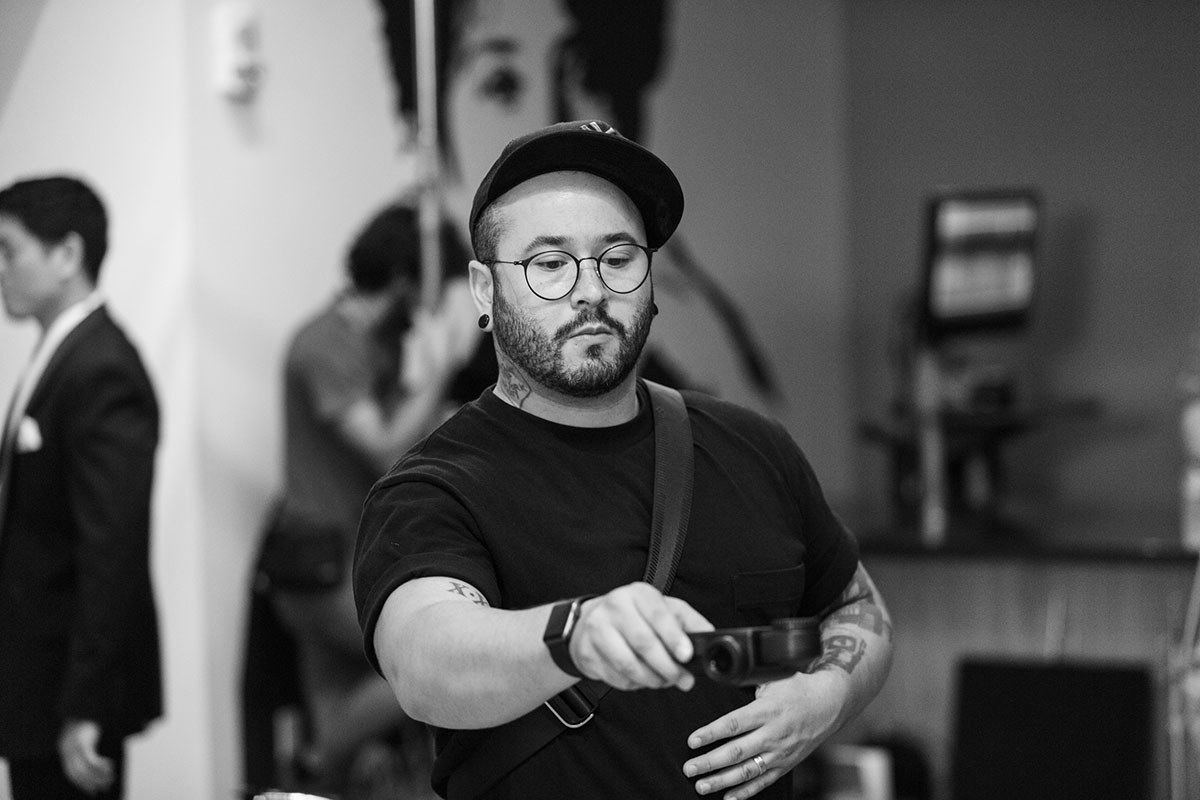
Eric Branco was listed by Variety as being one of 10 cinematographers to watch in 2019. Photo courtesy of Inuka Bacote and Eric Branco.
“As far as to what I am excited to see in the film it would be our night exteriors which actually look like night in New York,” remarks Branco. “What little lighting that we did was in keeping with my idea of not having a lot of standing lights everywhere. We lit a bunch of scenes from windows across the street. We would get a location on a street and would get a second location where I could have line of sight to our street and put full units like Lykos up in the windows and shoot them down the block. Our biggest lights were M40s.” The biggest challenge for Branco was having to think in black and white. “I needed to be able to look at a costume and say, ‘That’s not going to work because the blue blazer, burgundy vest and tan vest will all be the same shade of grey in black and white.’ I shoot a lot of black and white stills, so I do have a comfort level with that. But definitely building a world in black and white was new to me.”